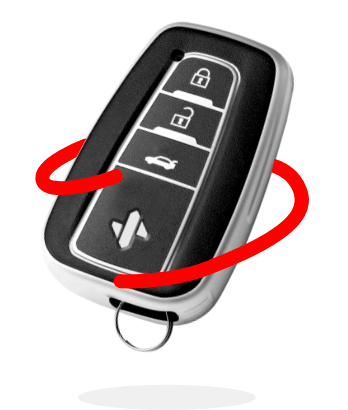"You have termites” are three words no homeowner ever wants to hear.
Unfortunately, termite damage is a reality for many homes across the country.
In fact, an estimated $5 billion of termite property damage occurs each year, according to the National Pest Management Association.
When faced with these pests, will your homeowner’s insurance take care of any damage? Or will you be left to pay the bill yourself?
Here’s what you need to know about termite damage and your home insurance coverage:
- 5 telltale signs of termite damage
- Does home insurance cover termite damage?
- 2 situations where termite damage may be covered
- How to submit a termite damage claim
- How to prevent termite damage
FIVE TELLTALE SIGNS OF TERMITE DAMAGE
Termites hollow out wood by eating their way through it, leaving tunnels and chambers for their colony to live and feed in — either in the wood itself or nearby, depending on the termite species.
Subterranean termites are more destructive and harder to spot, as they live in soil around your home and tunnel to their food (or the wood in your home). Meanwhile, drywood termites will eat where they live: right in the wood itself.
Termite damage is incredibly dangerous for your home because it compromises its structural integrity. But sadly, a termite infestation can be difficult to spot until it has become extensive.
Here are five telltale signs of termite damage:
1. Frass
You might discover termite droppings (or frass) around your home; the pellets are made up of wood and mounds resemble sawdust.
2. Mud tubes
Subterranean termites protect their path from their nest to their food source with a network of mud tubes. Made of a mix of soil and wood, these tunnels protect the termites along their route from predators and the elements, and are often found near the foundation of your home.
3. Swarmers
In the spring, swarmers — termites responsible for reproducing — will emerge and fly to create new colonies. You might see the flying termites or, more likely, you’ll see the discarded wings around your home. (The swarmers no longer need the wings once they’ve landed.)
4. Water damage
If you see signs of water damage, like peeling paint or blistering flooring, you may actually be dealing with termites. Termites love moisture.
5. Wood damage
When wood is eaten by termites and begins to become hollowed out, it’s a telltale sign you have an issue. You might notice wood is dull or sounds hollow when you tap it. You might also notice piles of crumbling or discarded wood around support beams, door frames, and more wooden structures.
DOES HOME INSURANCE COVER TERMITE DAMAGE?
Unfortunately, here’s a fact that might scare more homeowners than the termite infestation itself: in general, home insurance does not cover termite damage.
Since home insurance is meant to cover situations that are sudden and accidental, termite damage does not apply. Instead, it’s considered to be preventable with routine home maintenance. Similarly, home insurance also won’t cover the cost of preventable measures like extermination.
Sudden and accidental damage like a fire or storm damage is covered, due to the fact that it can’t be prevented. Since termites cause gradual damage, it’s a different story.
TWO SITUATIONS WHERE TERMITE DAMAGE MAY BE COVERED
While most termite damage won’t be covered by your home insurance policy, there are two situations where you may still be covered.
1. Fire
If termites happened to chew through the electrical wiring of your home causing a fire, home insurance may potentially cover the fire-related damage.
2. Sudden home collapse
If your home suddenly collapses due to extensive termite damage, it could be covered by your home insurance policy.
However, in order to meet claim criteria for most policies, you’ll need to meet these conditions:
- “Collapse” means your property fell down and broke into pieces, not that it was simply sagging, bowing, expanding, cracking, etc.
- Termites that caused the collapse were hidden and unknown to you. (If you knew about an infestation and took no action, your claim will be denied.)
HOW TO SUBMIT A TERMITE DAMAGE CLAIM
If you have damage to your home from termites and meet either of the qualifications above, you might have a valid claim.
Here’s how to submit your termite damage claim:
- Contact your insurance company to begin the claims process.
- Your home insurance company will send an adjuster out to your home to assess whether there was neglect or you do have a valid claim.
- If your claim is approved, your insurance carrier will pay out for the damage according to your policy.
- If your claim is not approved, it’s critical that you call in professionals to remove the termites so there is no further damage to your home. (Remember that if you choose to remove them yourself, it’s imperative that you remove the entire colony.)
When it comes to the damage the termites already caused, unfortunately you’ll have to cover those costs yourself too. Get several quotes from local and reputable contractors to find the best fit for your budget.
As always, each home insurance policy is unique, so it’s important to consult with your carrier beforehand so you understand what is and isn’t included in your plan.
HOW TO PREVENT TERMITE DAMAGE
You’ve learned a lot about what to look for when it comes to termite damage and what is and isn’t included in most home insurance policies regarding termites.
But what if you haven’t encountered a termite issue yet? Proactively preparing for these pests will ensure you don’t ever have to worry about any insurance issues.
Here’s how to prevent termite damage in your home:
- Have regular inspections done. Professional pest removal experts can assess your home and identify any potential termite problems. It’s recommended to have termite inspections performed annually.
- Check areas with wood. You can also perform your own inspections, by regularly checking any areas with wood in your home for obvious damage (refer to the list above for what to look for).
- Keep your home as dry as possible. Use drainage pipes and gutters to keep water away from your foundation. Ensure your roof and gutters are always in good working order, with no rotten shingles or clogs in the gutters. Also, be sure to regularly check that sinks, showers, and baths don’t have leaks.
- Keep wood away from your home. Don’t entice termites with wood that’s ready to eat. Remove dead trees or fallen limbs from around your home, as well as keep mulch several feet away from the foundation. Additionally, stack firewood away from the house and always use treated wood in structures you build around the house (like a deck, fence, and other buildings).
Although home insurance generally doesn’t cover termite damage, you now know what to look for around your home and how to prevent any future termite damage. Always refer back to your home insurance policy to get acquainted with what your carrier will and won’t cover.
If you need help finding the best home insurance coverage for the best price, start by speaking to a SimplyIOA agent at 833.872.4467 or get a home insurance quote online now.


.png)







